At this point in the course, students are suppose to have the basic content of the course under their belt and their projects firmly established. despite us being mostly remote, for the most part we are where we should be. We have learned a lot from our scientists that joined us. We all have experience filming. We have worked through filming setups, animals not doing what we want, and the students have projects they are working. It is pretty impressive what the students are doing this semester at home with their iPhones, some basic supplies, and invertebrates. I’m planning on sharing at the end of the semester what they have all been doing. The focus of the course shifts at this point from scaffolding to student-driven inquiry. My role is to be a mentor to them as they conduct research, it’s a bit tougher remotely, but it is working. The projects this semester may not be publishable, may not have the sample sizes, or be ideal, but again, I’m impressed with what the students are accomplishing.
Week 9 had us focusing on collecting videos and starting to digitize. There was an assignment at the start of week 9 where students had to submit an example video, the digitized point, and the resulting performance/kinematics. Aside from some glitches in Tracker that we figured out, the videos, tracked points and resulting performances look good. This is one of the checkpoints I have in the class to ensure we can get the data we hope to, which has become more important working remotely. On Monday, I gave a short lecture on presentation skills using some slides from Amy Cheu. Thank you Amy for posting those, as I am not artistic and her presentation is really helpful. This short presentation was in preparation for the students presenting during the rest of the semester. Wed. of Week 9 saw our first set of live, virtual student presentations where they summarized a paper from the primary literature. These went well given the virtual environment.
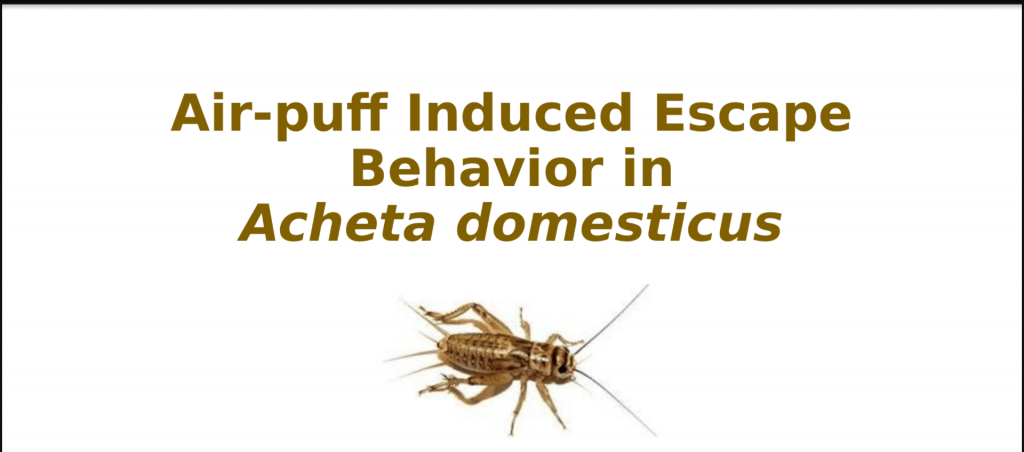 Week 10 started with a small lecture on what an annotated bibliography is as that will be our next large assignment. There was a Research Proposal VoiceThread presentation due at the start of class Monday. This is one thing I changed due to the nature of the class. Normally there are only 4 or so presentations as students are working in groups. Since everyone is working independently, we would have 10 presentations. Instead of doing it synchronously, having more Zoom time, I turned it into a VoiceThread assignment. Students uploaded their presentations to VoiceThread and commented over their slides for their presentation. This worked well, aside from some formatting issues with VoiceThread. They can do the presentations at their own pace without having to sit online more. Students continued to collect videos and worked on projects, at home for most. The students coming in continued to collect videos of their animals. Wed. saw our second set of student presentations, summarizing articles from the primary literature.
Week 10 started with a small lecture on what an annotated bibliography is as that will be our next large assignment. There was a Research Proposal VoiceThread presentation due at the start of class Monday. This is one thing I changed due to the nature of the class. Normally there are only 4 or so presentations as students are working in groups. Since everyone is working independently, we would have 10 presentations. Instead of doing it synchronously, having more Zoom time, I turned it into a VoiceThread assignment. Students uploaded their presentations to VoiceThread and commented over their slides for their presentation. This worked well, aside from some formatting issues with VoiceThread. They can do the presentations at their own pace without having to sit online more. Students continued to collect videos and worked on projects, at home for most. The students coming in continued to collect videos of their animals. Wed. saw our second set of student presentations, summarizing articles from the primary literature.
A fairly uneventful two weeks, which is perfectly fine. The class is building up to larger projects, so I want to make sure they have the time (in class or at home) to complete those. As most students are finishing up data collection, we’ll turn our focus to data presentation and analysis.

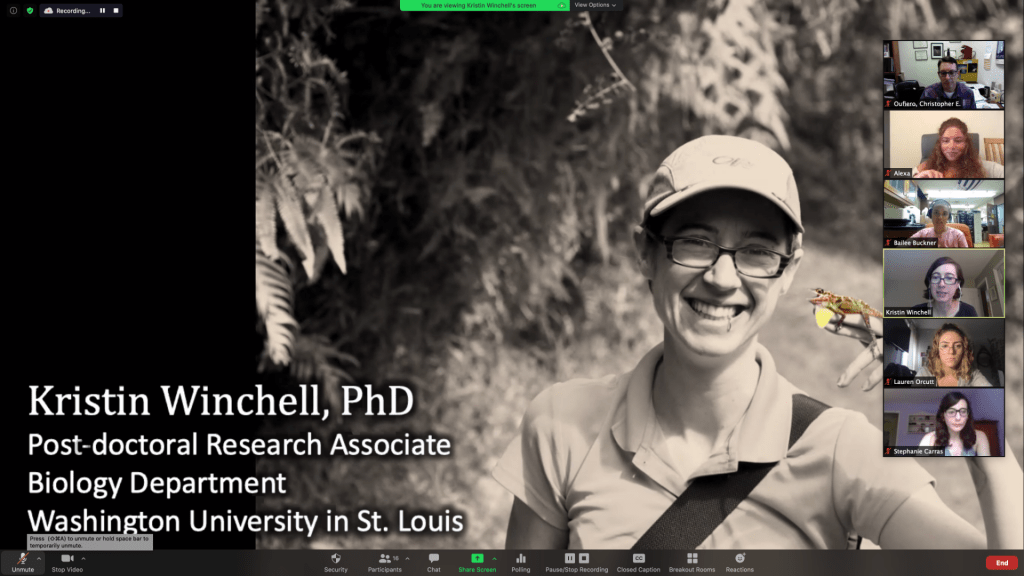 Wednesday’s class was a bit smoother. I had the right zoom time to start. I lectured from my office on my computer, taking the time to have powerpoint, Zoom participants and chat open, so I could see them all at once. We discussed factors that might affect performance. The highlight of Wed. was our first Scientist Spotlight.
Wednesday’s class was a bit smoother. I had the right zoom time to start. I lectured from my office on my computer, taking the time to have powerpoint, Zoom participants and chat open, so I could see them all at once. We discussed factors that might affect performance. The highlight of Wed. was our first Scientist Spotlight. 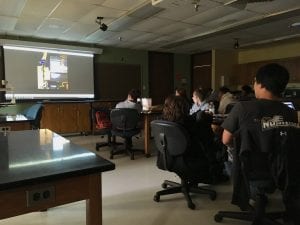 editing, creativity, and creative commons music (which we discussed). They were a bit skeptical of the assignment, not sure of what I was looking for, and asked if I had ever done one, which I had not. But, since we had an unexpected snow day the Thursday before, I decided to try my hand at it and created one for them. This was a really fun assignment, every group did a great job at showcasing their research and creativity. As a bonus, I will be sharing their videos with the faculty and staff here as advertisements for each group’s poster coming up at our Dept.’s annual fall poster day. The group that gets the most faculty to visit (they’ll have sign in sheets) based on their trailers will get some bonus points. I’ve also considered giving a bonus to the group that has the most views on social media as they are posted on youtube and twitter. Below are the trailers, get some popcorn and enjoy!
editing, creativity, and creative commons music (which we discussed). They were a bit skeptical of the assignment, not sure of what I was looking for, and asked if I had ever done one, which I had not. But, since we had an unexpected snow day the Thursday before, I decided to try my hand at it and created one for them. This was a really fun assignment, every group did a great job at showcasing their research and creativity. As a bonus, I will be sharing their videos with the faculty and staff here as advertisements for each group’s poster coming up at our Dept.’s annual fall poster day. The group that gets the most faculty to visit (they’ll have sign in sheets) based on their trailers will get some bonus points. I’ve also considered giving a bonus to the group that has the most views on social media as they are posted on youtube and twitter. Below are the trailers, get some popcorn and enjoy!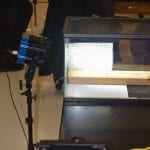
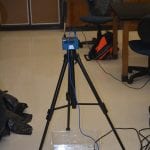
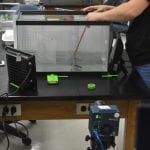

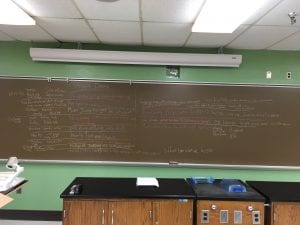 Students then went back out to the Glenn Arboretum to collect some invertebrates with Aaron and Jess. They came back with a bunch of organisms. Instead of filming, I wanted to give them time to talk about project ideas. So, I had them brainstorm. We wrote all the ideas on the board and started thinking about experimental design, sample sizes, and feasibility. They had an assignment due the next Monday on an initial project idea with citation. Starting to move from learning about animal movement and research to conducting research. In class on Wed. we had a lecture on jumping and discussed a paper on hindlimb length and jumping in leafhoppers.
Students then went back out to the Glenn Arboretum to collect some invertebrates with Aaron and Jess. They came back with a bunch of organisms. Instead of filming, I wanted to give them time to talk about project ideas. So, I had them brainstorm. We wrote all the ideas on the board and started thinking about experimental design, sample sizes, and feasibility. They had an assignment due the next Monday on an initial project idea with citation. Starting to move from learning about animal movement and research to conducting research. In class on Wed. we had a lecture on jumping and discussed a paper on hindlimb length and jumping in leafhoppers.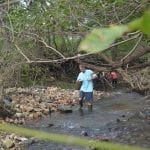
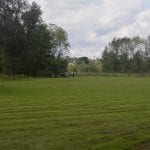
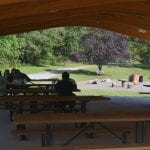
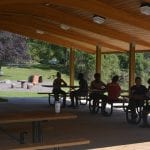
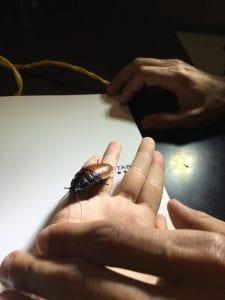 . We spent Monday going over logistics of the course, introductions of the class, some basic camera principles, and then got into filming. Every student held a hissing cockroach (good for an organismal course), and every student captured a high speed video of something moving. The video was part of their first assignment, worth 5 points and based off the following rubric I created to ensure they understand what makes a good video for analysis (
. We spent Monday going over logistics of the course, introductions of the class, some basic camera principles, and then got into filming. Every student held a hissing cockroach (good for an organismal course), and every student captured a high speed video of something moving. The video was part of their first assignment, worth 5 points and based off the following rubric I created to ensure they understand what makes a good video for analysis (